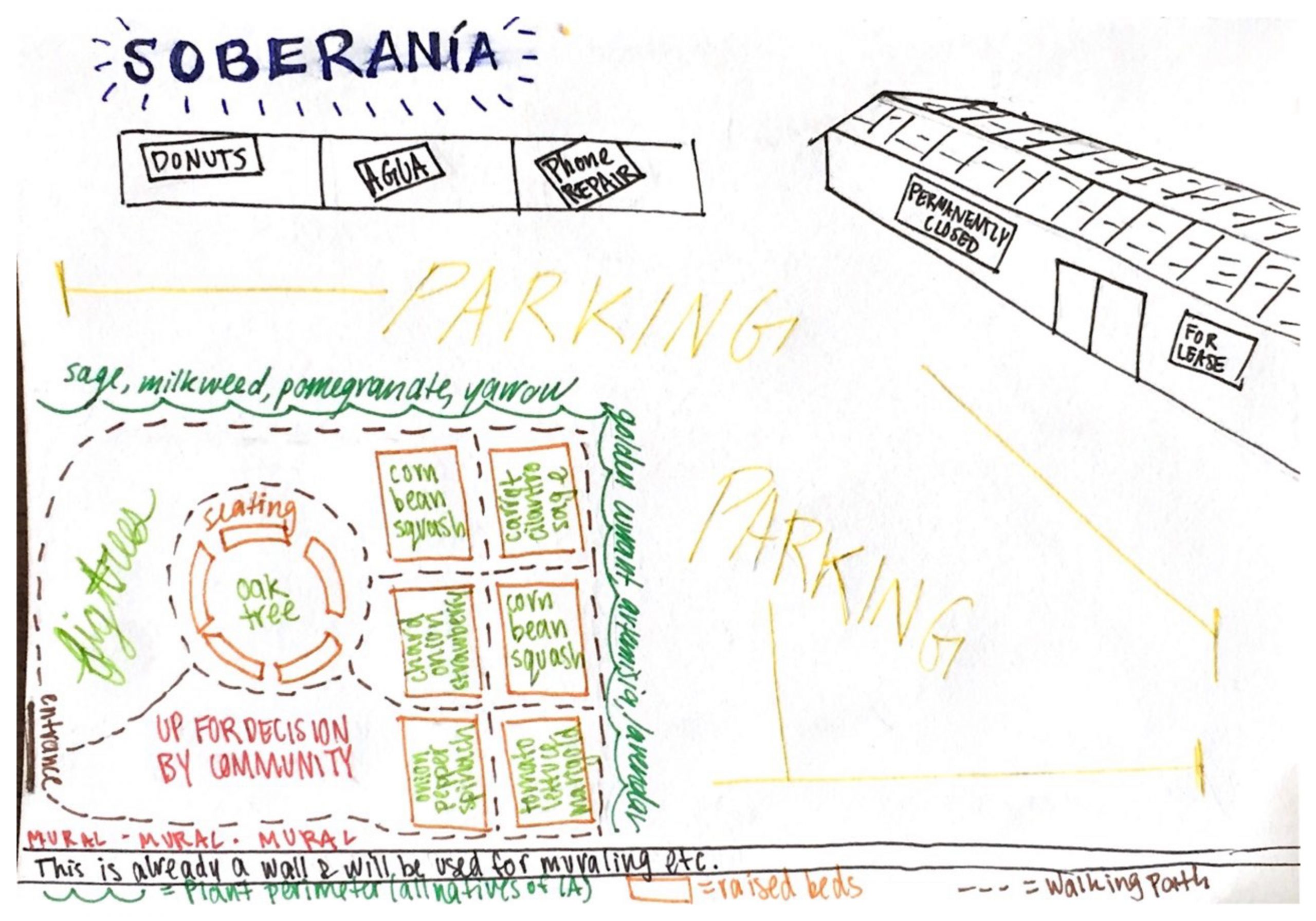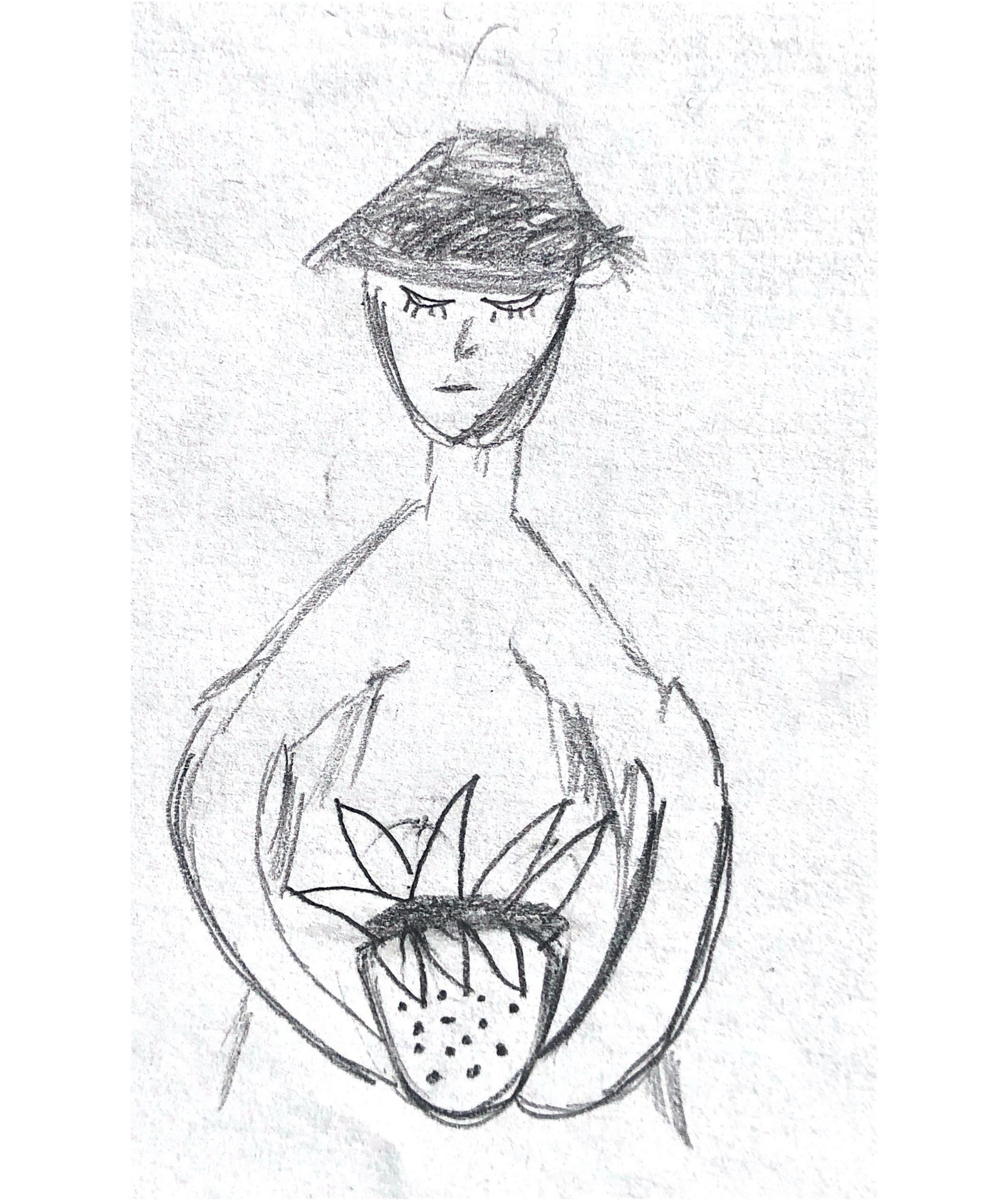Alicia Hernández-Miyares Garza
I grew up in Highland Park and have watched the neighborhood gentrify around us for essentially my whole life. The gentrification has grown so severe on two stretches, Figueroa between 50th and York, and York Blvd, that there are hardly any remnants of the predominantly Latinx businesses that existed there no more than 5 years ago. It is important to reclaim and re-publicize lands for the people who have been pushed out of their homes and neighborhood; whose feeling of home may have been stripped from them along with the location.
There are only one or two community gardens in the neighborhood, one in an affluent area and one in a non-gentrified Latinx area. One of the main attractions of Highland Park is the food, often expensive and inaccessible, with lines of hipsters out the door. Given these two factors, I would hope that a targeted community garden would not only add green space to the neighborhood, but serve as an opportunity for food sovereignty as food is one of the main vehicles for displacement and gentrification used in the area. It is an act of protest against those businesses and a declaration of presence, mirroring or mocking the exclusivity of new businesses.
If the produce grown is bountiful enough for those who grew it to use and then some, I would urge the leftovers to go to the few remaining Latinx businesses that have withstood the changes in the neighborhood.
I envision this plot being functional for many people, yet still in a prime enough location for patrons of new businesses to see. I am envisioning it next to the Metro gold line stop or taking up half of a now empty parking lot. I remember my brother saying “when the Fallas Paredes goes, you know it’s all over”. I saw a “permanently closed” sign next to a “for lease” sign on it last summer when I came back from Berkeley, in the same parking lot where just a few years ago my dad witnessed a shoot-out, when the neighborhood was deemed “dangerous” yet simultaneously “up and coming”. Even if it starts off small and grows in the original location, or expands to new ones, the point and impact hopefully ring true.
I would build raised beds using reclaimed wood, buy a bunch of gardening/potting soil, and get seeds from a collective or other urban farmers that I know in the area. We could also pick up some city compost for free.
We can also have a compost station where folks can collect their own food scraps and drop them off as they please, in order to be as self-sustaining as possible. I would also use or recommend companion planting so that folks can make the most productive use out of the space. There should be informational brochures at the front with everything one needs to know in order to start growing their own food. I would also leave a receptacle like a mailbox in the front for those $5 donations if they do start rolling in, and use it for supply maintenance or give it directly to the folks who participate in the gardening or need it. I would also like to start a seed exchange network.
I would like to build the beds with the people I aim to serve, sharing the tools of the trade so that they may bring the practice of gardening outside of the space. I would like to include voices of the neighborhood that are often overlooked, those who have felt the first hand impacts of gentrification. The story of gentrification is too often told by the gentrifiers themselves, hypocritically so. I have experience in this field and a car, but could borrow my dad’s truck and do the shopping with whoever wants to come along.
Ideally it’ll be up for a long time. I seek to build a sustainable system that can be maintained by the people. It may disappear or get taken over, but I aim to have it be an interactive and evolving experience. Once it is built and lightly facilitated or checked in on intermittently, it will be given over to the people. If that becomes burdensome, I would come back and continue to maintain it as needed.
I want the project to relate to the more modern history of gentrification and displacement, but also to the deeper history of indigneous peoples, the Tongva in the case of Los Angeles. There will be native plants bordering the plot of the garden, attracting pollinators and wildlife, and signage dedicated to the Tongva. I also want to erect a sign or wall for folks to write and paint whatever they please, however they please. This space can be used for dedications, recognitions, or expressions of any sort.
There are only one or two community gardens in the neighborhood, one in an affluent area and one in a non-gentrified Latinx area. One of the main attractions of Highland Park is the food, often expensive and inaccessible, with lines of hipsters out the door. Given these two factors, I would hope that a targeted community garden would not only add green space to the neighborhood, but serve as an opportunity for food sovereignty as food is one of the main vehicles for displacement and gentrification used in the area. It is an act of protest against those businesses and a declaration of presence, mirroring or mocking the exclusivity of new businesses.
If the produce grown is bountiful enough for those who grew it to use and then some, I would urge the leftovers to go to the few remaining Latinx businesses that have withstood the changes in the neighborhood.
I envision this plot being functional for many people, yet still in a prime enough location for patrons of new businesses to see. I am envisioning it next to the Metro gold line stop or taking up half of a now empty parking lot. I remember my brother saying “when the Fallas Paredes goes, you know it’s all over”. I saw a “permanently closed” sign next to a “for lease” sign on it last summer when I came back from Berkeley, in the same parking lot where just a few years ago my dad witnessed a shoot-out, when the neighborhood was deemed “dangerous” yet simultaneously “up and coming”. Even if it starts off small and grows in the original location, or expands to new ones, the point and impact hopefully ring true.
I would build raised beds using reclaimed wood, buy a bunch of gardening/potting soil, and get seeds from a collective or other urban farmers that I know in the area. We could also pick up some city compost for free.
We can also have a compost station where folks can collect their own food scraps and drop them off as they please, in order to be as self-sustaining as possible. I would also use or recommend companion planting so that folks can make the most productive use out of the space. There should be informational brochures at the front with everything one needs to know in order to start growing their own food. I would also leave a receptacle like a mailbox in the front for those $5 donations if they do start rolling in, and use it for supply maintenance or give it directly to the folks who participate in the gardening or need it. I would also like to start a seed exchange network.
I would like to build the beds with the people I aim to serve, sharing the tools of the trade so that they may bring the practice of gardening outside of the space. I would like to include voices of the neighborhood that are often overlooked, those who have felt the first hand impacts of gentrification. The story of gentrification is too often told by the gentrifiers themselves, hypocritically so. I have experience in this field and a car, but could borrow my dad’s truck and do the shopping with whoever wants to come along.
Ideally it’ll be up for a long time. I seek to build a sustainable system that can be maintained by the people. It may disappear or get taken over, but I aim to have it be an interactive and evolving experience. Once it is built and lightly facilitated or checked in on intermittently, it will be given over to the people. If that becomes burdensome, I would come back and continue to maintain it as needed.
I want the project to relate to the more modern history of gentrification and displacement, but also to the deeper history of indigneous peoples, the Tongva in the case of Los Angeles. There will be native plants bordering the plot of the garden, attracting pollinators and wildlife, and signage dedicated to the Tongva. I also want to erect a sign or wall for folks to write and paint whatever they please, however they please. This space can be used for dedications, recognitions, or expressions of any sort.
Share


